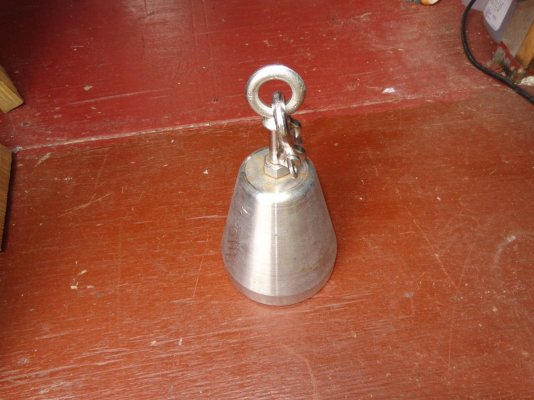rgano
Guru
- Joined
- Oct 8, 2007
- Messages
- 4,995
- Location
- USA
- Vessel Name
- FROLIC
- Vessel Make
- Mainship 30 Pilot II since 2015. GB-42 1986-2015. Former Unlimited Tonnage Master
With my own anchor /chain/windlass set up I can not fit a chain counter. So over the years I have tried various systems. Recently I went back to the in link coloured markers (gummy bears) and after 24 months I am not having ant problems. I mark my chain every 10 mts with about 5 markers so they can't be missed and use Red, Yellow. Blue , Green. After 40 mts I start to use guess work. I carry 110 mts of 1/2" proof short link anchor chain.
I very rarely anchor in any depth over 20 mts.
Highly visible markers are a good thing, but over time, I used to have trouble with the paint disappearing or the plastic markers getting pulled off. In order to more easily relocate the location for paint or plastic marking, I resorted to using the solid core copper wiring from some house wiring to permanently mark the chain. I used a repeating pattern of three wraps around one side of a link at whatever interval of chain I wanted to mark. One link wrapped at the first interval, then two, then three, then repeat to pattern. The wildcat couldn't tear that system up.








